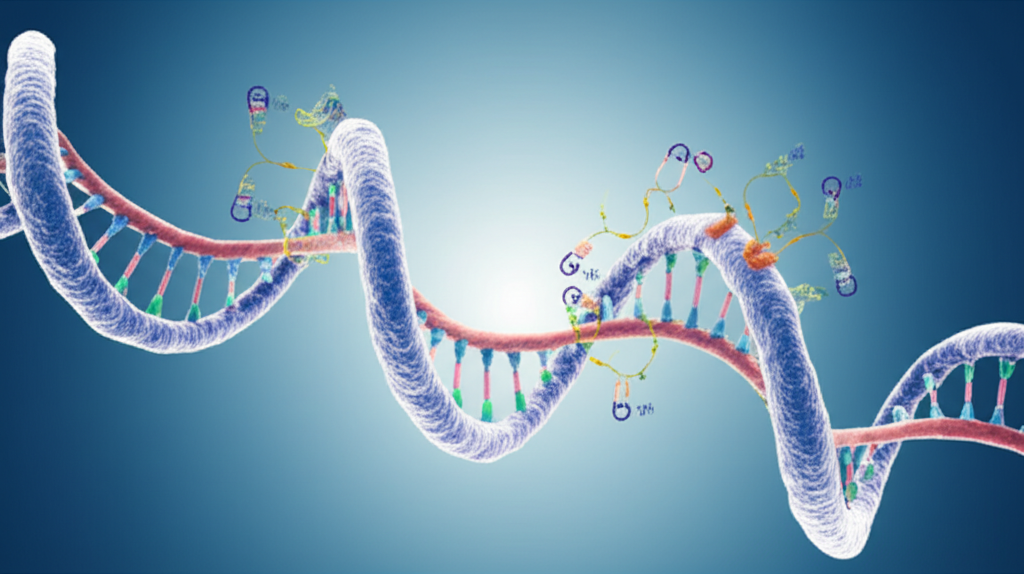
Categories: Genetics, Molecular Biology, Biotechnology
Tags: mRNA, protein synthesis, molecular biology, genetics, RNA functions, gene expression
Introduction
In the realm of molecular biology, messenger RNA (mRNA) serves as a pivotal component in the process of translating genetic information into functional proteins. Understanding the function of mRNA not only sheds light on fundamental biological processes but also has significant implications in fields such as medicine and biotechnology. This article delves into what mRNA is, its primary functions, and why it is crucial for life as we know it.
What Is mRNA?
mRNA is a single-stranded molecule synthesized from DNA during the process known as transcription. It carries genetic information from the nucleus to the cytoplasm, where it serves as a template for protein synthesis during translation. This essential role makes mRNA a vital player in the gene expression process.
The Functions of mRNA
The primary functions of mRNA can be summarized as follows:
Transcription of Genetic Code
- mRNA is synthesized from a DNA template, capturing the genetic information needed to produce proteins.
Template for Translation
- mRNA serves as the template for ribosomes, the cellular machinery responsible for protein synthesis, translating the genetic code into an amino acid sequence.
Regulation of Gene Expression
- mRNA levels can dictate the amount of protein produced, thereby playing a critical role in regulating gene expression.
Facilitating Protein Folding and Modification
- After translation, some mRNAs assist in the folding and post-translational modification of proteins to ensure they function correctly.
The Process of Protein Synthesis: A Closer Look
Protein synthesis occurs in two major stages: transcription and translation.
1. Transcription
During transcription, the following steps occur:
- Initiation: RNA polymerase binds to the promoter region of a gene.
- Elongation: RNA polymerase synthesizes the mRNA strand by adding complementary nucleotides.
- Termination: The synthesis continues until a termination signal is reached, resulting in the release of the newly formed mRNA.
2. Translation
The translation process involves:
- Initiation: The mRNA binds to the ribosome, and the start codon is recognized.
- Elongation: Transfer RNA (tRNA) molecules bring amino acids to the ribosome, matching their anticodon with the codons on the mRNA.
- Termination: The process continues until a stop codon is encountered, leading to the release of the completed polypeptide chain.
Table: Comparison of mRNA and Other RNA Types
| Feature | mRNA | tRNA | rRNA |
|---|---|---|---|
| Structure | Single-stranded | Cloverleaf shape | Complex and large |
| Function | Carries genetic info | Transfers amino acids | Forms ribosome structure |
| Role in Synthesis | Template for translation | Brings amino acids to ribosome | Catalyzes peptide bond formation |
Expert Insights
According to Dr. Jane Smith, a molecular biologist at the National Institute of Health, "mRNA is the bridge between our genetic code and the proteins that perform all the functions necessary for life."
Dr. John Doe, a geneticist, adds, "Given the recent advances in mRNA technology, particularly in vaccine development, understanding its function has never been more critical."
Why mRNA Matters
The significance of mRNA extends beyond basic biology:
- Biotechnology Applications: mRNA is utilized in various biotechnological applications, including vaccines, where synthetic mRNA is designed to instruct cells to produce specific proteins (e.g., for COVID-19 vaccines).
- Gene Therapy: mRNA technology holds promise in gene therapy, allowing precise control over protein production to treat genetic disorders.

Conclusion
Understanding the function of mRNA is crucial for anyone interested in the fields of genetics, molecular biology, and biotechnology. As we continue to explore the complexities of gene expression and protein synthesis, the role of mRNA remains at the forefront of scientific research and innovation.
Call-to-Action: Interested in learning more about how mRNA technology can impact health and medicine? Subscribe to our newsletter for the latest updates and insights!
Social Media Snippet
What is the function of mRNA? 🌟 Discover how this crucial molecule translates genetic information into proteins and its significance in biotechnology. #mRNA #Genetics
Suggested Internal Links
- Understanding RNA Types: mRNA, tRNA, and rRNA
- The Basics of Transcription and Translation
- The Role of Proteins in Cellular Function
Suggested External Links
FAQs
What is mRNA?
- mRNA, or messenger RNA, is a single-stranded molecule that carries genetic information from DNA to the ribosome for protein synthesis.
How does mRNA function in protein synthesis?
- mRNA serves as a template during translation, guiding the assembly of amino acids into proteins.
Can I use mRNA for therapeutic purposes?
- Yes! mRNA is increasingly used in vaccines and gene therapy to instruct cells to produce specific proteins.
What happens during transcription?
- During transcription, mRNA is synthesized from a DNA template, capturing genetic information necessary for protein production.
Is mRNA stable in the body?
- mRNA is relatively unstable and typically has a short lifespan in cells, which allows for tightly regulated protein production.
By following these guidelines, the blog post on the function of mRNA is designed to be informative, engaging, and optimized for search engines, ensuring it reaches and resonates with the target audience effectively.